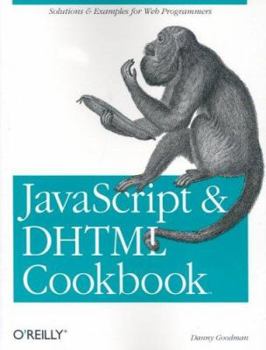JavaScript and DHTML Cookbook
Select Format
Select Condition 
Book Overview
In today's Web 2.0 world, JavaScript and Dynamic HTML are at the center of the hot new approach to designing highly interactive pages on the client side. With this environment in mind, the new edition... This description may be from another edition of this product.
Format:Paperback
Language:English
ISBN:0596004672
ISBN13:9780596004675
Release Date:April 2003
Publisher:O'Reilly Media
Length:540 Pages
Weight:1.70 lbs.
Dimensions:1.0" x 7.0" x 9.2"












